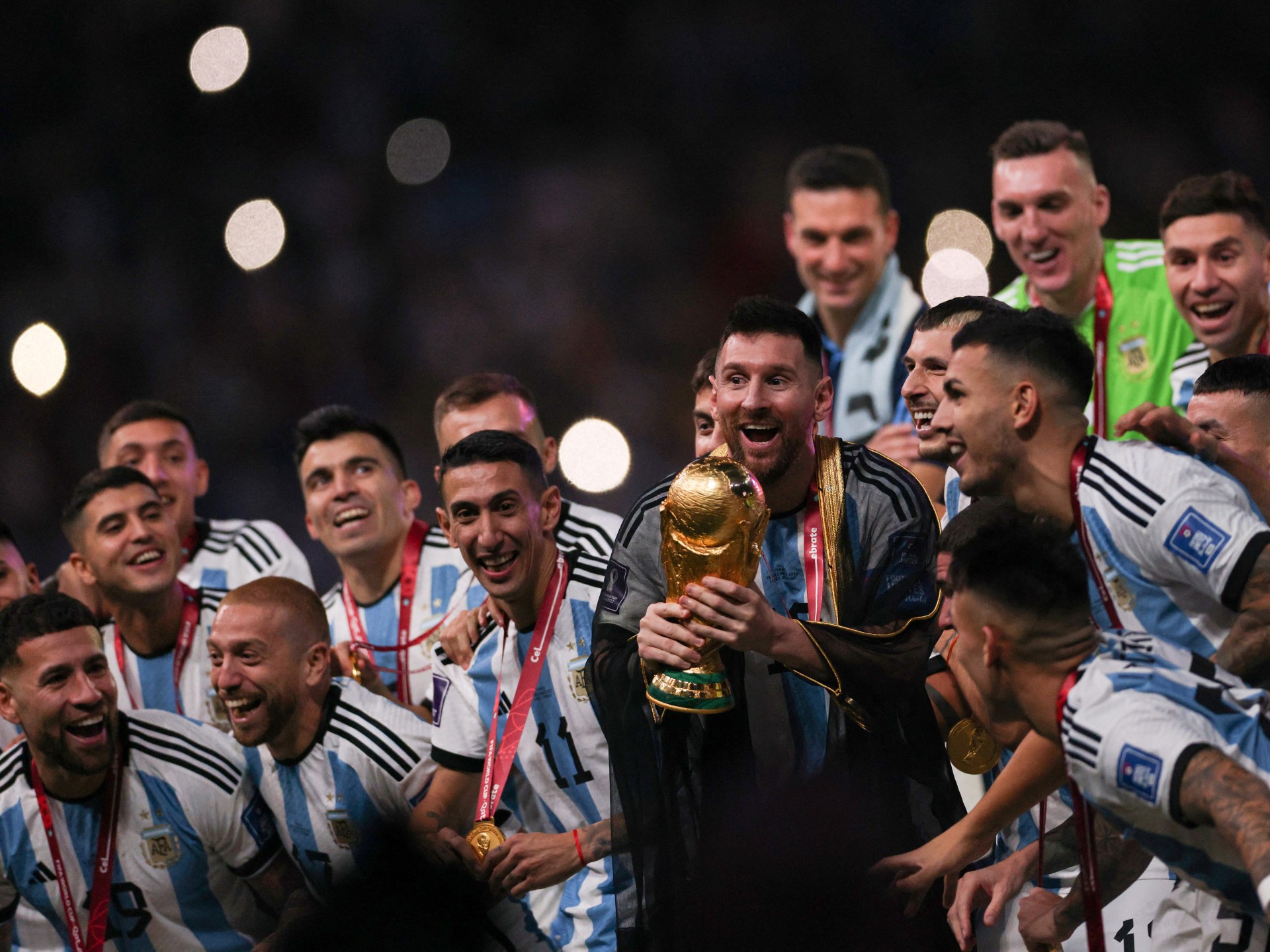On Sunday, billions of people collectively turned their gaze to the Lusail Stadium in Qatar, as Argentina were crowned World Cup champions after a sparkling final against France.
Yet instead of focusing on the majesty of the football the world had just witnessed, Western media opted to fixate on how the emir of Qatar draped Lionel Messi, the Argentine captain, in the traditional Arab cloak known as a “bisht”.
Reactions from several pundits and journalists have reflected the same racism and Islamophobia that have been prevalent throughout the tournament and in the years leading up to it. But they also underscore the lack of diversity that marks most Western newsrooms — which limits their ability to comprehend much of the world beyond stilted stereotypes.
“The bizarre act that ruined the greatest moment in World Cup history” read one, now redacted, the headline from British newspaper, The Telegraph. “Absolutely grim” declared the headline on Fox Sports, and “disgraceful” read Yahoo Sports.
Others opted for distinctly racist statements, with Mark Ogden, a senior ESPN journalist writing: “All the pics are ruined by somebody making him wear a cape that looks like he’s about to have a haircut”. Similarly, Dan Walker, a football television presenter wrote, in a now-deleted tweet, “I bet Mbappe is delighted he managed to swerve the weird mesh cloak with gold trim,” suggesting losing a World Cup final would have been better.
A bisht, also known as an aba or abaya in other Arab countries, is a garment symbolic of prestige, honour and stature. It is worn on special occasions and only by senior religious figures, political or tribal leaders, representing immense success.
The honour of wearing a bisht, especially if it is draped over you by a person of prestige – let alone by Qatar’s leader – is a rare privilege, a knighting or coronation in many ways. On Sunday, it added to the grandiosity of the occasion and was in recognition of what Messi has accomplished.
For this World Cup did not only represent Argentina’s victory. It also sealed Messi’s status in the eyes of many as the “GOAT” (greatest of all time) of football – above not just his peer Cristiano Ronaldo, but perhaps even the biggest former icons of the game such as Pele and Diego Maradona. He has now won every eminent trophy the sport has to offer, including seven Ballon D’Or titles – awarded to the best player annually.
Now, I do understand that since childhood it has been Messi’s dream to play for Argentina. Part of that dream likely included the hope of one day lifting the solid gold World Cup trophy in an Argentina jersey like Maradona before him. It is reasonable to wonder whether Messi’s wishes were overtaken by events on stage. But the Western media outrage is not about Messi’s dream. It is about an unwillingness, steeped in racism and Orientalism, to accept that football and celebrations can look different in different parts of the world.
At no point did Messi appear to show disdain for the bisht. Nor was his number 10 Argentina shirt – a jersey so iconic it sold out globally ahead of the final – covered beyond recognition.
It is not uncommon for victorious athletes to be given gifts or items of clothing reflective of local cultures. The aptest example is Pele’s 1970 World Cup victory in Mexico, where a sombrero was placed on his head. Was Pele’s moment “hijacked”, as Australia’s 7 News claimed happened in the case of Messi?
Indeed, from the day Qatar was awarded the right to host the World Cup, Western outlets have displayed their “shock”. Eurocentric and hypocritical objections persisted in the build-up to the epochal tournament and continued through it. The outrage over Messi’s bisht was one last show of ignorance.
The Moroccan national team’s success in the World Cup represented pride for many Arabs and Africans around the world. For me, as an Iraqi Arab, it was truly inspiring to see the triumph of another Arab nation and to witness their culturally similar celebrations. But, like with the bisht, Western media once again displayed anti-Arab ignorance after Morocco’s series of shock victories.
After they eventually bowed out to France in the semi-finals, ESPN posted a photograph of the Moroccan players in prostration, a symbol of humility to God for billions of Muslims around the world. But the caption read: “Moroccan players and staff bow in appreciation to their supporters that came out in force”.
A German news outlet, Welt, compared Moroccan players celebrating by pointing one finger towards the sky to ISIL (ISIS) fighters. No Western outlet draws such parallels for Messi when he celebrates by pointing his fingers towards the sky after scoring goals. The affectionate images of Moroccan players celebrating with their mothers, a reflection of the importance of family in African and Arab cultures, were mocked by a Danish television channel: The Moroccans were compared with a family of monkeys.
Yet such racism, ignorance and outright incompetence in journalism are not entirely surprising given the lack of representation in most Western newsrooms. In the United States, 40 percent of the population is not white. But a 2020 Reuters Institute study found that nearly 90 percent of top editors are white. Improving diversity at senior levels in newsrooms will help Western media outlets build safeguards against displays of ignorance — though that would need these organisations to accept their failure in dismantling barriers to growth for non-white journalists.
In the Arab world, some are excitedly calling the bisht-wearing Argentine captain “Sheikh Messi”. That too is a reflection of the affection he enjoys. Let us not taint his – and Argentina’s – glorious victory with a racist furore over a gesture of admiration and respect.
The views expressed in this article are the author’s own and do not necessarily reflect Al Jazeera’s editorial stance.
